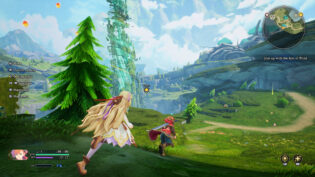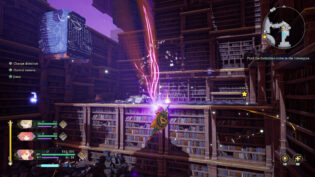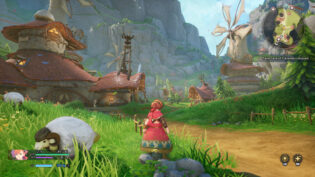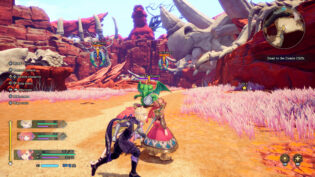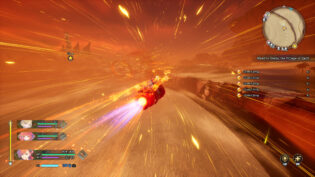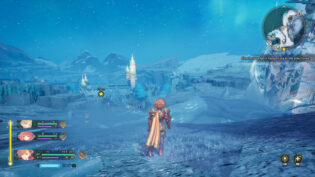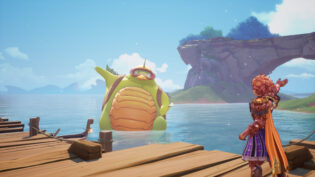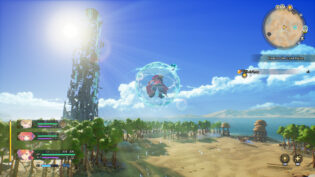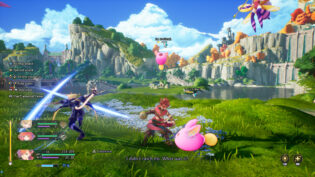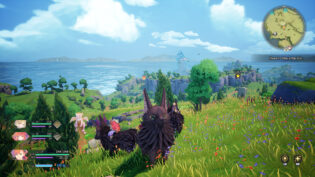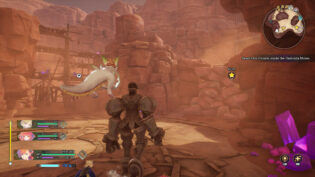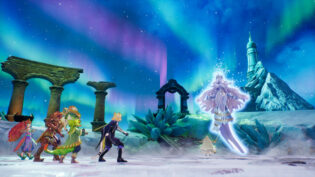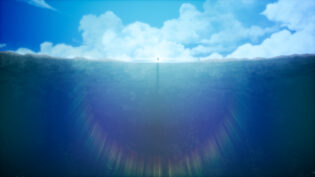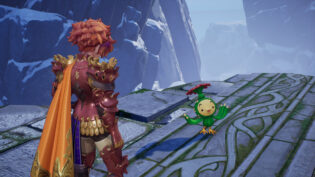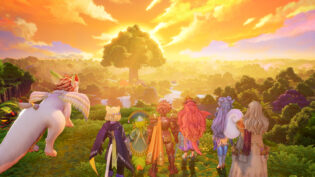As someone who didn’t play any Mana/Seiken Densetsu titles until the Trials of Mana remake, that I really enjoyed, I don’t really have any specific expectations from the series. All I want these games to be is fun jRPG/action RPG adventure titles with simple but exciting plots and some curious, if not necessarily revolutionary ideas. And while I didn’t enjoy my time with the Secret of Mana remake (and doubt I would’ve liked the original either), I still admired what it was trying to achieve as a SNES game from 1993. Plus, its story, while basic, was still curious and the world had lots of interesting and unexpected elements to it.
Which isn’t entirely lacking from Visions of Mana either – it does have its moments, its visual style is like concept art come to life and there is an adventurous spark to it. But unfortunately, it is also tedious, way too long for what it actually has to say and the cause for it all might not be some series of bad calls from the development team. No, the real issue here is that Visions of Mana feels like a game made by several teams, none of which knew what they were doing and why.
At its core, this is a team-based action RPG with simplistic hack and slash controls and separate menus for magic attacks and a few dedicated buttons for other types of special attacks. Just like in Secret or Trials, you control a team of three characters and can switch between them at any point during the fight, though during the city exploration you always revert to the main character of the game (or another character, if the story requires). As you follow the story, more characters join and the game allows you to create a team out of any combination of characters. And characters themselves have a selection of classes to choose from in addition to their default starting class. Unlike Trials, the classes are unlocked by equipping special artifacts tied to one of the elemental powers and can be swapped at any point outside of the battle. Each class has its own linear selection of skills you can unlock, with some becoming available for any class the character equips and some remaining exclusive to when you have said class active.
Unlike Trials of Mana remake, that played very much like a fun “Ys-lite” hack and slash game, where everything was super fast and to the point, Visions returns to a more traditional “enter the battle state” format when you attack enemies on the field and when in the battle you can then rub against the edges of the battle border to escape the battle (if the game allows it). And the combat is… primitive. It’s less of a hack and slash, and more of a jRPG game with direct controls, although your control over character actions is a bit more responsive than, say, Scarlet Nexus or Final Fantasy XV. But it doesn’t play like Trials of Mana (even less so Ys) and I’d say Final Fantasy VII Remake is also a far more interesting recontextualization of what the original Secret of Mana was aiming for, in case developers didn’t want it to be like Trials. Nothing about this combat system is outright bad, but it’s extremely boring, with “harder” fights usually being more long rather than difficult, which is also the case for the Hard difficulty. It’s simply designed in a way, where making this “challenging” is not possible.
The story, while suspiciously reminiscent of Final Fantasy X in more than one way, is also a mixed bag. On one hand, it has some really good emotional moments and characters aren’t always as one-sided and cliche as they usually appear during most of the game. On the other hand… well, that – most of the game story is exceedingly simple. Which isn’t a bad thing if it’s exciting and adventurous, and it sometimes is, but that’s where the rest of the gameplay issues completely kill whatever this game is going for emotionally.
The world looks beautiful. Really, it does. It’s as if concept artist made wonderful watercolour and oil concepts of locations and then magically made them 3D assets. It’s the art from Secret of Mana come to life. But as a gameplay space, it’s extremely boring and lifeless. Unlike Trials (and Secret), which created the illusion of big forests and fields via clear defined paths you run through, as is very common for action RPGs, Visions makes most of the locations work as a modern type of wide open world spaces. And probably because of that and the real chance of getting lost or not being able to find things game wants you to find, it’s full of markers that clearly show where stuff you might need is. Which, in turn, turns the entire game into running to markers on the map with no regard to the context of the action. You don’t need to read the dialogue, you don’t need to know what’s going on – run to the marker, do the clear thing, go to a different marker.
Which is also the entire formula for the side-quests in the game, of which there are about 120. Why so many? Because. Most of them are just “go there, kill enemies, go back” or something that sounds as exciting as that. And some have storylines of sorts, but those storylines are extremely boring and uninteresting. Meet a character who’s very nice – here’s a series of 5 side quests, between which you need to reload the location so the next one appears, at the end o which you will learn that the character is indeed very nice. Exciting.
And it brings me to that lack of cohesion and understanding of what the game is. It genuinely feels that story was written by one team, combat done by another, main quests by another, side quests by another, locations and mechanics that get their own long explanation only to then never be used again was made by another… And many other teams, none of which actually played the game and saw what their combined efforts bring. Characters get experience separately with each of their own XP bars filling in post-combat menu one by one. But it’s always synchronized across the entire team, so the more characters you get, the longer the post-combat screen lasts for no reason. Equipping a class gets its own intro cutscene, but you always get all artefacts by the middle of the story and can always unlock all classes for every character. Yet, when you finally get the last character, if you want to unlock their classes (which you obviously do), you need to sit through about 8 unskippable class intro cutscenes in a row. And every character gets an achievement for “unlocking all classes”, separately, even though you can’t not get all of them unless you’re too lazy to equip the artefacts. Some of the interior locations get a weird prompt if you want to enter them that looks like a last minute crutch, while some don’t…
I’m not even talking about how technically messy this game is. I had one fight almost become unwinnable because the enemy got flung high into the sky by one magic attack and couldn’t go back down. Objects on the locations might stay invisible. Map markers glitch constantly. Half of the cutscenes render at the gameplay framerate and look fine, half are rendered at a lower framerate and look like they’re constantly lagging for no apparent reason. Some of the already mentioned on-off mechanics barely function or require you to perform incredibly illogical and inconvenient things. The way controls are assigned is ridiculous and you cannot rebind any action to any button – for whatever reason, only select buttons are available per specific action. Also the game has about 4 different types of “currencies”, with 3 of them being almost entirely pointless for the majority of the game. Again – as if someone had an idea, put it in the game and no one ever played the completed product to realize that most of it could and should be cut or changed.
For the first dozen of hours or so I thought that I’d end up being carefully recommending the game. It had already shown most of its aforementioned problems and lack of cohesion or understanding what game is it supposed to be, but at least it was a simple adventure that could be enjoyable. But then the game lasted for way too long, for absolutely no reason. I could easily see cutting about half of everything in this game, locations, mechanics, story beats, characters and etc., and getting a far superior title. It would still be not something you’d love and remember forever, but at least it would be approaching the entertainment level of Trials of Mana, just without all of the fun crazy ambitions of that game. But as is, Visions of Mana is a boring confused mess that doesn’t do anything too badly, but also doesn’t have anything to justify spending the time on it.


